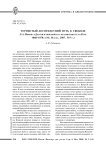Вестник ВолГУ. Серия: История. Регионоведение. Международные отношения @hfrir-jvolsu
Статьи журнала - Вестник ВолГУ. Серия: История. Регионоведение. Международные отношения
Все статьи: 1850
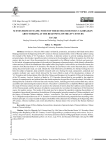
Сцены из городской жизни: заметки русского врача В.В. Корсакова о Пекине начала XX века
Статья научная
Введение. Цель данного исследования – выявление, систематизация и анализ отдельных сюжетов о Пекине, представленных в начале XX в. в литературных и публицистических произведениях российских авторов (на примере книг В.В. Корсакова). В настоящее время в отечественной науке идет активный процесс изучения документов личного происхождения, дающих возможность не только погрузиться в атмосферу жизни восточного города прошлого столетия, но и увидеть его с позиции представителя иной культуры. Методы и материалы. В данной статье первостепенное значение имеет анализ документов личного происхождения, в которых непосредственно нашла отражение культура и бытовой уклад жителей столицы империи Цин. В данной статье в качестве исторического источника привлекаются опубликованные в Российской империи воспоминания русского врача В.В. Корсакова, ставшего очевидцем событий, происходивших в Китае в исследуемый период. Несмотря на широкие информативные возможности, его литературное наследие до настоящего времени не являлось предметом отдельного глубокого научного изыскания. При проведении исследования были использованы сравнительный, аналитический, системный методы. Они позволили максимально эффективно изучить документальные свидетельства В.В. Корсакова и описать жизнь китайцев и иностранцев в столице Китая в начале XX столетия. Анализ. Анализ книг В.В. Корсакова показал, что он ориентировался на познавательный интерес современников и подбирал факты, которые могли подчеркнуть специфику китайской культуры. Его книги отличает подбор разнообразных, в том числе неописанных ранее, фактов и бытовых сюжетов, доступный стиль изложения материала. Результаты. Приверженность автора к упрощенному западническому подходу к изучению китайской культуры, отсутствие системы в подборе сюжетов о традициях и бытовом укладе жителей Китая, наличие субъективных оценок не снижают значение данного исторического источника для современной науки. Результаты исследования могут быть востребованы специалистами, изучающими проблемы межэтнического (межкультурного) взаимодействия, традиции азиатских народов (на примере жителей Китая), историю российско-китайских отношений. Вклад авторов. Ю.Г. Благодер анализировала тексты воспоминаний и дневников В.В. Корсакова, группировала факты по тематическому принципу. Лю Лицю выявляла степень достоверности характеристики Пекина начала XX в., китайских традиций и событий, описанных русским врачом, служившим в Русской Духовной миссии.
Бесплатно
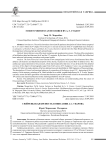
Сюйреньская крепость в описании А.С. Уварова
Статья научная
Настоящая публикация вводит в научный оборот описание Сюйреньской крепости, составленное А.С. Уваровым в рамках подготовки четвертой главы «От Днепра до Таврических гор» третьего, неопубликованного выпуска «Исследований о древностях Южной России и берегов Черного моря» (ныне хранится в архиве Отдела письменных источников Государственного исторического музея). Сюйреньская крепость - один из наиболее загадочных и малоизученных «пещерных городов». Время сооружения здесь укрепления различные исследователи датируют в диапазоне от VI до XII века. К моменту посещения А.С. Уваровым Крыма (1848 г.) данное городище было практически неизвестно как исследователям, так и широкой общественности. «Сюйреньский сюжет» А.С. Уварова состоит из двух неравномерных частей: краткого обзора архитектурных остатков оборонительных сооружений и подробного описания церкви, расположенной на втором этаже оборонительной башни. Особое внимание исследователь уделил фресковым росписям, сохранившимся тогда в храме. Это фактически первый в историографии (за исключением краткого описания П.И. Кеппена) подробный обзор данного объекта. Сопровождавшим А.С. Уварова художником М. Вебелем были сделаны зарисовки оборонительной линии крепости и фрагментов различимых в 1848 г. фресковых росписей. Описание А.С. Уварова осталось неизвестным исследователям Сюйреньской крепости середины XIX - начала XXI века. Рисунки же М. Вебеля, вошедшие в так называемый «Неизданный альбом А.С. Уварова», стали первоисточником для всех последующих поколений ученых: уже во второй половине XIX в. часть оборонительных стен обрушилась, а росписи, доступные природным стихиям, уже к середине XX в. были практически неразличимы. Публикация уваровского описания позволит расширить наши представления о характере фресковой живописи Сюйреньской крепости.
Бесплатно
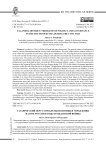
Таганрогский округ: проблемы политики и управления на юге России в годы гражданской войны
Статья научная
Введение. Гражданская война в России имела много измерений. Общий рисунок противостояния возникал в результате реализации большого количества локальных противоречий. Изучение конкретно-исторических обстоятельств междоусобицы в рамках местной истории открывает новые возможности для оценки мотивов участия людей в гражданской войне и роли в этом сословных, групповых, партийных противоречий и ситуативных обстоятельств. Методы и материалы. В статье использованы классические методы исследования. Источниковая база представлена неопубликованными и опубликованными документами, воспоминаниями и прессой. Преобладают материалы, вышедшие из белого лагеря, так как изучаемая территория находилась под белогвардейской юрисдикцией. Анализ. В статье рассматривается положение в Таганрогском округе области Войска Донского (далее - Область) на протяжении 1918-1919 годов. В Таганрогском округе преобладало крестьянское население, в отличие от остальных округов Области. Население округа испытало на себе администрирование разных властей, включая оккупационную немецкую власть. В близком соседстве разворачивалось движение Махно. В результате сословной вражды и отсутствия достоверной информации, крестьянство округа дважды поднималось на восстания, в октябре 1918 г. и в марте - апреле 1919 года. Восстания были подавлены, а округ стал проблемной зоной для белого военного командования и политического руководства. В статье подробно показано, как созревали и разворачивались данные события. Продемонстрировано, что крестьянство, не доверяя казакам, возлагало свои надежды на главных политических субъектов Гражданской войны, то есть красных, или Добровольческую армию.
Бесплатно
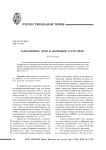
Таможенное дело в Царицыне в XVII веке
Статья научная
Статья посвящена малоизученной проблеме зарождения и становления таможенного дела в Царицыне. На основании исследования комплекса архивных документов опровергнута общепринятая ранее в краеведческой литературе дата учреждения таможни (1691 г.) и доказано, что о таможне в Царицыне можно говорить уже с момента строительства крепости на правом берегу Волги (1615 г.).
Бесплатно
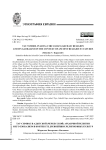
Статья научная
Введение. Генезис традиционной религии адыгов неразрывно связан с феноменом сакральности символизма и атрибутики. Главным атрибутом традиционной религии адыгов являлся Тау-символ. Он был сакральным объектом для поклонения единому Великому Богу (адыг. - Тхьэ / Тхьэшхуэ). Происхождение культа Тау-символа связывает традиционное религиозное мировоззрение адыгов с древними религиозными культурами.
Бесплатно
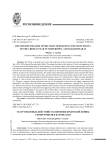
Театр небоевых действий: памятники Крымской войны Симферополя и Бахчисарая
Статья научная
Статья посвящена событиям, которые происходили за пределами поля основных сражений, развернувшихся в период Восточной (Крымской) войны на полуострове. Автор дает общую картину того, что происходило в других городах Крыма в период героической обороны Севастополя. Называются крымские города, подвергшиеся вторжению неприятеля, рассказывается о последствиях их оккупации. Основное внимание уделено Симферополю и Бахчисараю как прифронтовым городам, оказывавшим существенное влияние на ход боевых действий на полуострове и испытавшим все их последствия. Автор приводит фамилии известных участников Крымской войны, чьи судьбы оказались связанными с этими городами. В числе таковых писатели Л.Н. Толстой и Н.В. Берг, которые достаточно долгое время находились в этих городах во время войны. Особое внимание уделено хирургу Н.И. Пирогову, чья деятельность на полуострове в годы войны была тесно связана с Симферополем. Речь идет также об активных участниках боевых действий в Крыму - генералах П.А. Вревском и П.В. Веймарне, погибших в сражении на Черной речке и похороненных в Бахчисарае. Автор полагает, что информирование о событиях, происходивших на всей территории Крыма, существенно расширяет наши представления о масштабах Крымской войны, показывает ее драматизм и роль в судьбах народов, городов и отдельных известных и не известных нам людей, представляет дополнительный материал для патриотического воспитания. В статье подробно говорится о работе по увековечению памяти о событиях Крымской войны, проводимой в Крыму, и о необходимости бережного отношения к памятникам, расположенным на всей территории полуострова.
Бесплатно
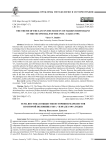
Тема Востока в обществе историков-марксистов во второй половине 1920-х - начале 1930-х годов
Статья научная
Востоковедение не являлось ведущим направлением в деятельности общества историков-марксистов (вторая половина 1920-х - начало 1930-х гг.), но оно сыграло заметную роль в приближении этой области знания к практическим потребностям текущей политики ВКП(б) и Коминтерна. Доклады на общих собраниях Общества и секции истории Востока, публикации в журнале «Историк-марксист» сосредотачивались вокруг проблематики истории национально-освободительного движения в колониальных и зависимых странах, политики царской России на южных окраинах империи и социалистических преобразований в национальных республиках СССР. Если в первые годы наибольшее влияние имели известные марксисты-востоковеды М.П. Павлович, В.А. Гурко-Кряжин, И.М. Рейснер, то в последующий период руководящие позиции в Обществе заняли историки-востоковеды, не имевшие серьезного научного авторитета, но твердо придерживавшиеся классового подхода. После проведения Всесоюзной конференции историков-марксистов в центр своего внимания они поставили критику «старых буржуазных школ» в области истории Востока и «разоблачение псевдомарксизма в собственных рядах». Однако смогли добиться результатов в решении только второй задачи, используя для этого в первую очередь дискуссии об общественно-экономических формациях, о положении и задачах на фронте изучения Востока, о немарксизме исторических взглядов Гурко-Кряжина. Идеологический поворот середины 1930-х гг. во многом обесценил значение исследований этого поколения марксистов-востоковедов, а властью были признаны достижения представителей академического востоковедения.
Бесплатно
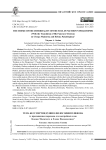
Статья научная
В статье рассматриваются взгляды последнего крупного византийского философа Георгия Гемиста Плифона на бессмертие человеческой души. Ученые до сих пор спорят, был ли Плифон язычником, полностью отвергшим христианство, или христианином, слишком увлеченным платонизмом. Сравнительный анализ его сочинений показывает, что в учении о человеческой душе и ее посмертной участи Плифон далеко отошел от христианства. Он исповедовал предсуществование душ телам и постоянное перерождение, жизнь в теле считал главной миссией человека во вселенной в качестве соединительного элемента мира смертных и бессмертных; согласно Гемисту, периодическое соединение в человеке бессмертной души и смертного тела лучше, чем бесконечное бессмертие после одной жизни, и его учение о душе не подразумевает ни обожения тела, ни телесного воскресения и страшного суда в конце времен. В монодиях Плифона нехристианские взгляды выражены завуалированно, однако в них отсутствуют традиционные для византийских авторов отсылки к христианским источникам, и внимательный анализ текста монодий в сопоставлении с другими сочинениями философа показывает, что его воззрения на участь души, с одной стороны, сильно отличались от учения церкви, а с другой - выглядели более оптимистично, оставляя душе возможность как для постепенного совершенствования в череде перерождений, так и для наслаждения божественной жизнью между ними при условии добродетельного поведения на земле. К статье прилагается перевод монодий Плифона на смерть Клеопы Малатесты и Елены Палеологины.
Бесплатно
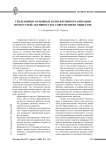
Тенденции и основные направления организации протестной активности в современном обществе
Статья
Бесплатно
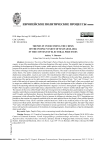
Статья научная
Введение. Кризис Народной партии Испании - наиболее влиятельной политической силы страны - является одним из проявлений трансформации партийной системы. Научная тема важна при прогнозировании развития партийной системы, общественного мнения и голосований в Испании. Методы и материалы. Цель статьи - выяснить тенденции преодоления кризиса в Народной партии Испании (2018-2022 гг.) в контексте изменений партийной системы и электоральных процессов. Исследование проведено на основе теории рационального выбора. Автор осуществил вторичный анализ результатов социологических опросов, составил диахронные таблицы голосований. Анализ и результаты. Выявлена трансформация двухпартийной системы Испании в многопартийную систему умеренного плюрализма за 2015-2022 годы. Определены различия социальной базы, программ и позиционирования партий правого спектра: Народной партии, «Вокс» и «Граждан». В результате анализа источников раскрыты причины и проявления кризиса Народной партии, установлены его этапы. Аргументируется прогноз тенденций развития влияния Народной партии на предстоящих национальных и региональных выборах. Заключение. Среди правых партий Испании Народная партия занимает правоцентристскую позицию в сравнении с «Гражданами», смещенными к центру, и партией «Вокс», смещенной к правому радикализму. Причины кризиса Народной партии - ее многолетние связи с крупным капиталом, участие в коррупционных скандалах, слабое влияние на потенциальные группы электоральной базы, низкая популярность ряда лидеров - М. Рахоя и П. Касадо, фракционность. Но пандемия способствовала снижению рейтинга левоцентристского правительства, что позволило Народной партии с 2021 г. наращивать влияние на выборах. Возможны переговоры о создании прагматической коалиции двух основных политических сил - Народной партии и Испанской социалистической рабочей партии. Такая коалиция может быть основана на сдвиге политики социалистов вправо. При втором, более вероятном варианте Народной партии придется блокироваться с другими правыми партиями, наибольшее число мандатов для создания правительства добавит праворадикальная партия «Вокс». Следовательно, победа правых сил приведет к продолжению традиции создания прагматических, вынужденных коалиций идеологически чуждых друг другу партий.
Бесплатно
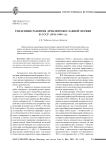
Тенденции развития древлеправославной церкви в СССР (1941-1949 гг.)
Статья научная
Определена роль древлеправославной церкви в период Великой Отечественной войны, вы- явлены основные тенденции ее развития. Показаны изменения в политике Советского государ- ства по отношению к церкви. Рассмотрены мероприятия, направленные на объединение старо- обрядческих согласий.
Бесплатно
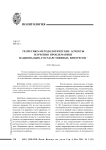
Теоретико-методологические аспекты изучения проблематики национально-государственных интересов
Статья научная
В статье содержится анализ различных теоретико-методологических подходов к проблеме национально-государственных интересов. Рассматривается вопрос сохранения независимости в глобализирующемся мире с точки зрения национально-государственных интересов одной стра- ны в соотношении с национально-государственными интересами других стран.
Бесплатно
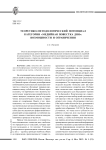
Теоретико-методологический потенциал категории «медийная повестка дня»: возможности и ограничения
Статья научная
В статье анализируются базовые теоретические подходы к понятию «повестка дня», выделяются основные виды данного феномена и обосновывается познавательная ценность медийной его разновидности. Отдельное внимание уделяется исследовательским возможностям «медийной повестки дня», а также тем ограничениям, с которыми сталкивается исследователь в процессе оперирования данной категорией.
Бесплатно
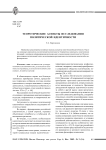
Теоретические аспекты исследования политической идентичности
Статья научная
Выявлены и рассмотрены основные подходы к анализу политической идентичности. Указаны основные компоненты политической идентичности. Определена значимость политических традиций и интересов в формировании регионального самосознания (идентичности). Рассмотрено влияние политической элиты на складывание региональных политических идеологий и мифотворчество.
Бесплатно
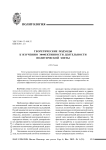
Теоретические подходы к изучению эффективности деятельности политической элиты
Статья научная
В статье рассматривается проблема эффективности деятельности политической элиты, которая недостаточно изучена в современных социально-гуманитарных науках. Эффективность профессиональной деятельности рассматривается как одна из ключевых характеристик политической элиты. Выделены и проанализированы основные методологические подходы к изучению эффективности. Рассмотренные подходы необходимы для теоретического и эмпирического исследования эффективности деятельности политической элиты.
Бесплатно
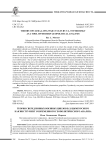
Статья научная
Целью данной статьи является введение в методологический арсенал современной политической науки концепции сверхдлинных военных циклов (далее - СВЦ) российского политолога, философа и филолога Вадима Леонидовича Цымбурского (1957-2009 гг.) и выявление с ее помощью потенциальных ключевых угроз современной системе международной безопасности. В статье выдвигается гипотеза о досрочном завершении последнего из выделенных В.Л. Цымбурским СВЦ, начавшегося с изобретением ядерного оружия в 1945 г. и характеризовавшегося преобладанием возможностей уничтожения над мобилизацией - так называемый «депрессивный» СВЦ. Последний характеризуется отсутствием широкомасштабных длительных войн, устойчивостью мировой политической системы. Автор статьи доказывает, что под воздействием научно-технических открытий в сфере вооружений (высокоточное оружие в сочетании с ядерными боезарядами пониженной мощности, «роевое» оружие, кибернетическое оружие, биологическое оружие, глобальная система противоракетной обороны) и социально-политических технологий (манипулирование потоками беженцев, «гибридная война», глобальное ослабление национальных идентичностей и социальное расслоение наций с формированием «интернационала элит») великие державы стоят на пороге преодоления «ядерного тупика» и входа мировой политической системы в фазу повышенного риска развития полномасштабной мировой войны. В ближайшие десятилетия мир может войти в стадию «экспансивного» СВЦ, характеризующегося возвращением к ставке на мобилизационные ресурсы как основному фактору в военно-политическом противоборстве. Один из эффективных способов сохранения мира автор статьи видит в развитии общественной дипломатии, многосторонних международных контактах на уровне негосударственных акторов.
Бесплатно
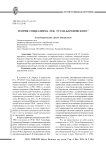
Теория социализма М.И. Туган-Барановского
Статья научная
Представления о социализме русского экономиста М. И. Туган-Барановского значительно отличались от марксистской и, особенно, ленинской модели будущего общества. Во главу угла русский экономист поставил отношение к личности, которую он рассматривал в качестве «высшей ценности». Кроме того, М. И. Туган-Барановский был противником излишней централизации государственной власти и предусматривал различные способы ее сдерживания и ограничения.
Бесплатно
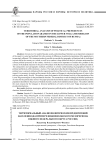
Статья научная
Введение. В современном российском обществе все более утверждается понимание выборов как важной составляющей части общественно-политической жизни страны в контексте различий в политических ориентациях населения. Это утверждение позволяет рассмотреть географию выборов как в отдельно взятых регионах, так и по стране в целом, а также провести глубокий исторический анализ для более полного понимания происходящих политических процессов в стране. Методы. Представляется наиболее важным рассмотреть данную проблему в контексте федеральных выборов на должность Президента Российской Федерации с применением статистического метода. Сравнительный и картографический методы способствуют лучшему пониманию географических особенностей политических предпочтений электората. Анализ. Исследование показало, что на развитие любых процессов, в том числе политических, серьезное влияние оказывает региональная специфика территории, затрагивающая все ее сферы. В этой связи необходимо выделить причины, обусловливающие характер изменений электоральных предпочтений избирателей рассматриваемой территории. Результаты. Прослежена динамика избирательной активности населения Нижневолжского мезорегиона на выборах Президента страны. Выявлена смена электоральных предпочтений избирателей за рассматриваемый период. Проведен территориальный анализ политических предпочтений населения, выявленных в процессе федеральных выборов; отмечен их разнонаправленный характер. Определены основные причины изменений электоральных предпочтений избирателей Нижневолжского мезорегиона на президентских выборах. В.В. Фесенко рассмотрел результаты президентских выборов, выявил смену электоральных предпочтений и определил основные причины их изменений. Л.В. Деточенко основное внимание уделила анализу активности электората и территориальных особенностей политических предпочтений избирателей.
Бесплатно
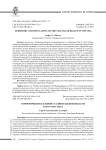
Территория и население сталинградской области в 1939-1944 годах
Статья научная
В статье показаны административно-территориальное деление, численность и национальный состав населения Сталинградской области в 1939 г. и последующие их изменения в 1941-1944 годах. В отличие от соседних Воронежской, Ростовской и Саратовской областей, состоявших только из районов, в состав области входил Астраханский округ (8 сельских районов из 66), который в конце 1943 г. был преобразован в самостоятельную область. На территории области находилось более 7 тысяч населенных пунктов, из которых лишь в 641 население превышало 500 человек. Городское население области составляло 39 %, при этом большая его часть была сосредоточена в Сталинграде и Астрахани, остальные 5 городов и 12 рабочих поселков были небольшими по численности. Площади сельских районов и численность населения были неравномерными. Наиболее крупные и густонаселенные районы входили в состав Астраханского округа, которые составили 23,9 % территории и 26,9 % населения области. В статье исследован национальный состав населения Сталинграда, Астрахани и сельских районов области, проведено сравнение с соседними областями. В Сталинградской области проживали представители более 80 национальностей, среди которых преобладали русские (87,6 %), украинцы (3,6 %), казахи (3,2 %), татары (2,8 %) и немцы (1,0 %). Большое внимание уделено изменению территории и составу населения области после присоединения в 1941 г. 7 районов ликвидированной АССР немцев Поволжья и в 1944 г. 2 районов ликвидированной Калмыцкой АССР и депортации немцев и калмыков в восточные районы страны. На преодоление последствий войны и депортации для восстановления численности населения области потребовалось около 20 лет.
Бесплатно

